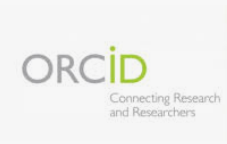Diagnosis on the training of medical students for the identification of electrocardiographic alterations
Keywords:
electrocardiography, aptitude, clinical competence, medical studentsAbstract
Introduction: electrocardiogram is a very useful clinical examination. For that reason, it is necessary to achieve in the students skills allowing its correct interpretation.
Objective: to characterize the training of Medicine students for identifying electrocardiographic alterations during their education at work.
Materials and methods: a cross-sectional descriptive observational study was carried out at the General Teaching Hospital Dr. Antonio LuacesIraola, of Ciego de Avila, during the 2020-2021 school year. The study population was 21 third-year Medicine students from the Basic Work Team assigned to the Cardiology Ward, to whom a self-assessment survey was applied.
Results: 52% of students self-evaluated Unsatisfactory, and 43% Acceptable in the identification of normal and pathological electrocardiogram. Regarding the relationship between the clinical method and the interpretation of the electrocardiogram for the diagnosis of different cardiovascular diseases, 48% was evaluated Acceptable and 43% Unsatisfactory. In the accuracy when recognizing the origin of each wave, segments or intervals, and each of their pathological deviations, 71% was evaluated Unsatisfactory and 29% Acceptable. In the precision for the diagnosis of potentially life-threatening electrocardiographic syndromes, 91% was evaluated Unsatisfactory; 95% was also evaluated Unsatisfactory in recognizing the electrocardiographic criteria for the diagnosis of cavity hypertrophies.
Conclusions: the diagnosis revealed difficulties assessed as acceptable and unsatisfactory in all indicators, exposed in the students’ self-evaluations.
Downloads
References
2. Pérez-Bada E, Quintana-López LA. Evaluación del desarrollo de habilidades clínicas en estudiantes de 3er año de Medicina, Villaclara. EDUMECENTRO[Internet]. 2020[citado 12 Ago 2022];10(2):[aprox. 9 p.]. Disponible en: http://scielo.sld.cu/scielo.php?script=sci_arttext&pid=S2077-28742018000200005
3. Lara Prado JI. El electrocardiograma: una oportunidad de aprendizaje. Rev Facultad Medicina (México)[Internet].2016[citado 4 Ago 2022];59(6):39-42. Disponible en: http://www.scielo.org.mx/scielo.php?script=sci_arttext&pid=S0026-17422016000600039&lng=es&tlng=esguardiola
4. González-Aguilera JC, Muñoz-Farto A, Fonseca-Muñoz JC. Propuesta didáctica para el desarrollo del sistema de clases de electrocardiografía en la asignatura Propedéutica Clínica. RM[Internet]. 2013[citado 13 Ago 2022];17(1):1-13. Disponible en: http://www.revmultimed.sld.cu/index.php/mtm/article/view/109
5. Matos E, Cruz L. El taller de socialización y la valoración científica en las Ciencias Pedagógicas. Rev Transformación[Internet].2012[citado 23 Mar 2020]; 8 (1):10-19. Disponible en: https://core.ac.uk/download/pdf/268093401.pdf
6. Declaración de Helsinki de la Asociación Médica Mundial. Principios éticos para las investigaciones médicas en seres humanos [Internet]. 59ª Asamblea General, Seúl, Corea; oct 2008[citado 12 Ago 2022]. [aprox. 5 p.]. Disponible en: http://bvs.sld.cu/revistas/recursos/helsinki.pdf
7. Arévalo-Pérez L, Sori-Peña JA, Pérez-García ER. EKGUÍA, software educativo sobre la interpretación del electrocardiograma [Internet]. La Habana: AVS; 2020[citado 4 Ago 2022]. Disponible en: http://aulavirtual.sld.cu/pluginfile.php/44343/mod_data/content/10397/EKGUIA.pdf
8. Vento-Pérez RA, Hernández-Rodríguez Y, León-García M. Video del procedimiento de realización de un electrocardiograma [Internet]. Holguín: CENCOMED; 2019[citado 12 Ago 2022].[aprox. 15 p.]. Disponible en: http://edumedholguin2019.sld.cu/index.php/2019/2019/paper/view/309/199
9. Ministerio de Salud Pública. Comisión de carrera de Medicina. Disciplina Bases Biológicas de la medicina. Programa de la asignatura Sistemas cardiovascular, respiratorio, digestivo y renal. La Habana: MINSAP; 2018.
10. Bouza Jiménez Y, Milián Vázquez PM, López Rodríguez del Rey MM, Acosta Figueredo E. El proceso de enseñanza aprendizaje de la electrocardiografía en la carrera de medicina. MediSur [Internet]. 2020[citado 12 Ago 2022];18(4):591-604. Disponible en: http://scielo.sld.cu/scielo.php?pid=S1727-897X2020000400591&script=sci_arttext&tlng=en
11. Méndez Velásquez JC, Pérez Giraldo JA. La enseñanza por pares, una estrategia didáctica para el aprendizaje de la electrocardiografía básica. Acta Médica Colombiana [Internet]. 2021[citado 21 Ago 2022];46 (2): [aprox. 11 p.]. Disponible en: http://actamedicacolombiana.com/ojs/index.php/actamed/article/download/1971/1035
12. Ramírez-Collazo CR, Batista-Molina I, Gutiérrez-Garcés AO, Pérez-García RR. ELECTROMAX, una aplicación móvil de electrocardiografía clínica para estudiantes de medicina. EsTuSalud [Intrenet]. 2021[citado 21 Ago 2022]; 3(1): 44. Disponible en: http://www.revestusalud.sld.cu/index.php/estusalud/article/viewFile/44/47
13. Guardiola Brizuela RE, Novoa López A, Conde Fernández B, Estevez Leiva N, Lage Menese M. Nuevo método para impartir el curso de electrocardiografía al tercer año de la carrera de Medicina. Gaceta Médica Espirituana [Internet]. 2017[citado 21 Ago 2022];6(1):10. Disponible en: http://www.revgmespirituana.sld.cu/index.php/gme/article/viewFile/929/876
Downloads
Published
How to Cite
Issue
Section
License
All content published in this journal is Open Access, distributed under the terms of the CC BY-NC 4.0 License.
It allows:
- Copy and redistribute published material in any medium or format.
- Adapt the content.
This will be done under the following terms:
- Attribute the authors' credits and indicate whether changes were made, in which case it must be in a reasonable way.
- Non-commercial use.
- Recognize the journal where it is published.
The copyrights of each article are maintained, without restrictions.





